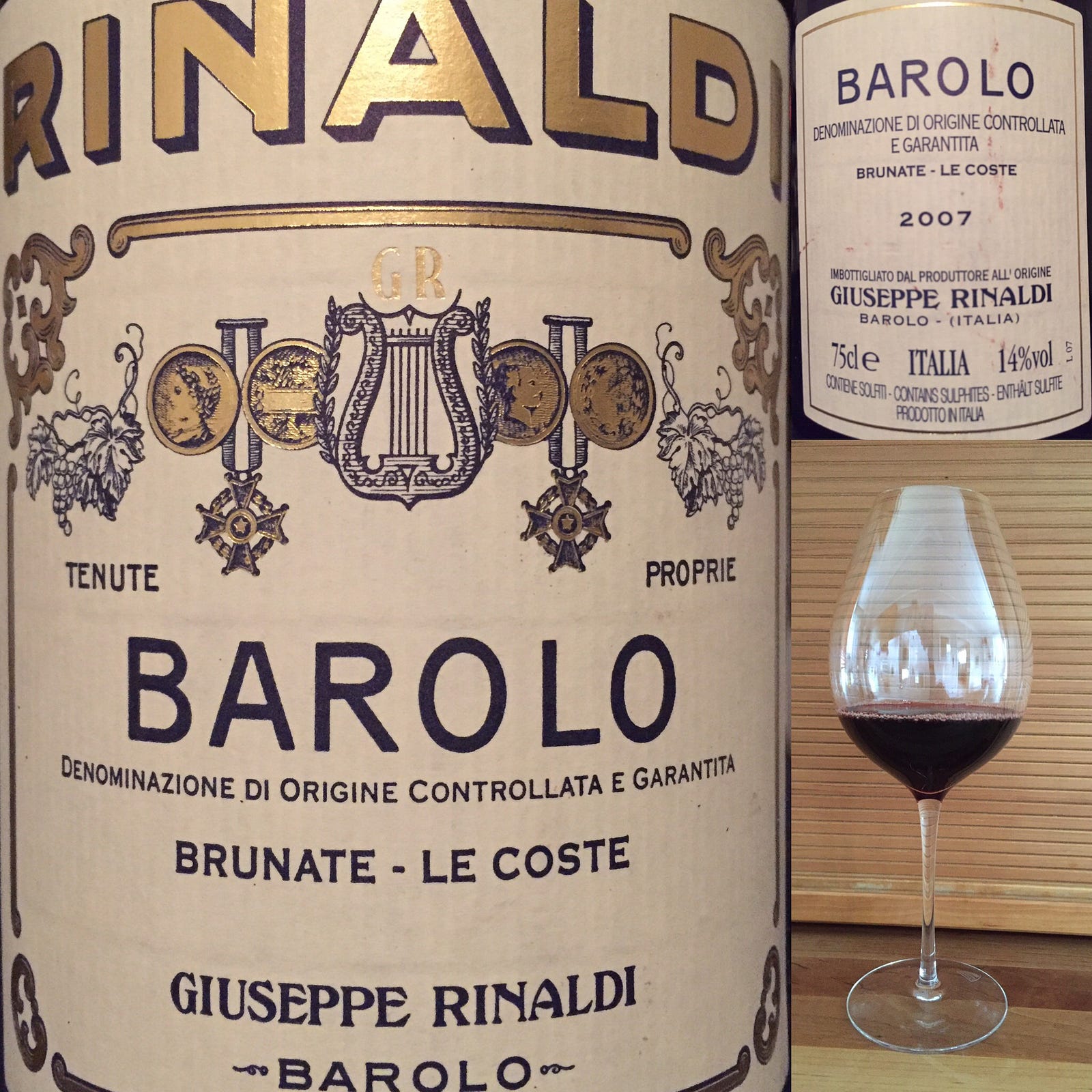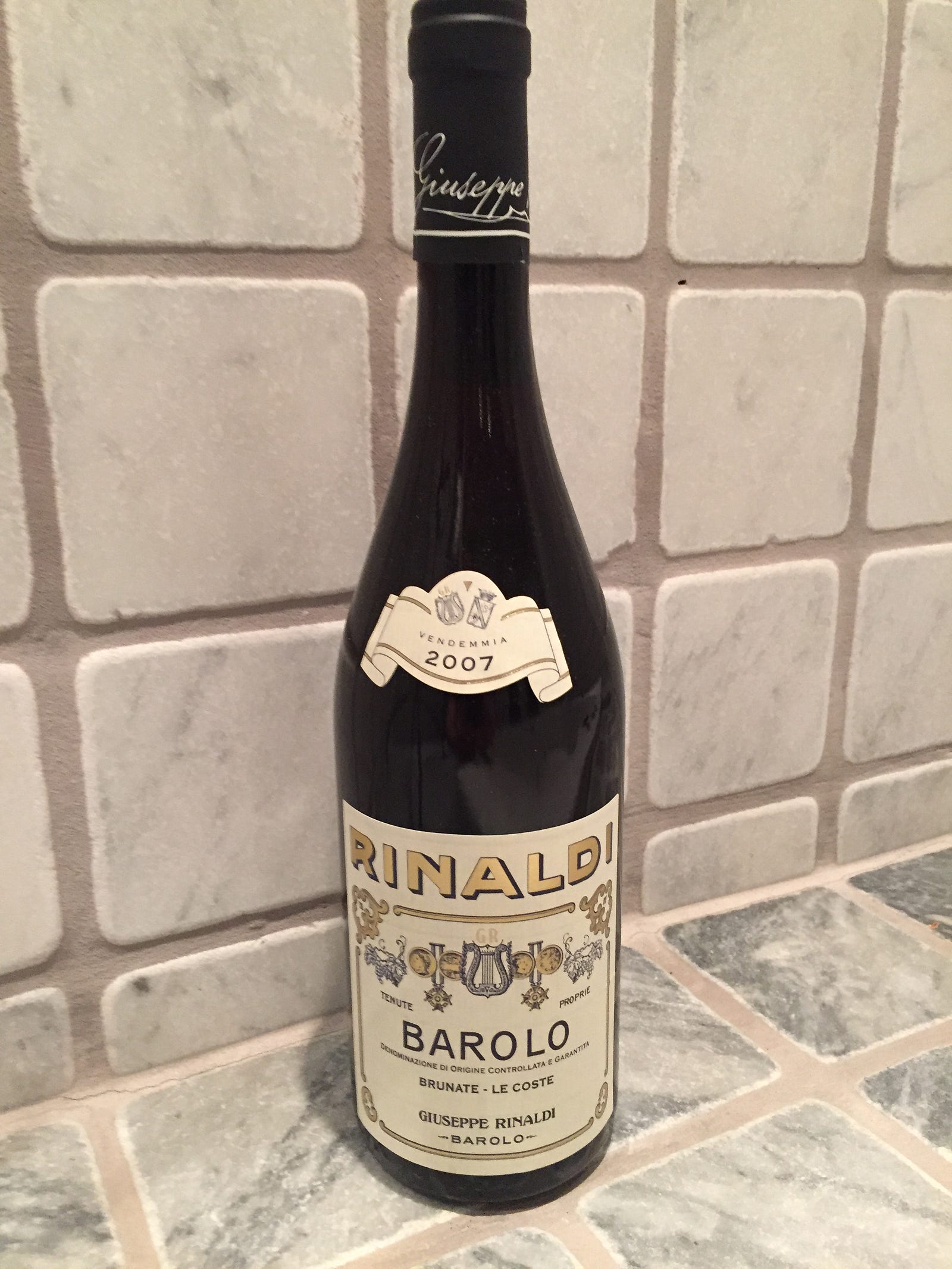Traditional “Old School”, cherries, roses, cedar, violets and tobacco with a typical hint of tar and a long finish. Still rather young, but accessible — imposing and delicious, drinking nicely right now. (Drink 2018–2030.)
Why is Barolo so special? Why is it considered the king of Italian wines? The Italian Stallion of red wines? The answer is deceptively simple: it’s a matter of terroir and each winemaker’s specific style of wine-making.
Barolo is one of the world’s most stern, tannic, full-flavored wines, offering aromas of road tar, leather, bing cherries, tobacco, and dried herbs. Massive and intensely fragrant, it can easily last for 20–30 years. Barolo is made from the Nebbiolo grape grown on the steep hillside vineyards situated south and southwest of Alba, the area’s largest town. The thick-skinned Nebbiolo grape of Barolo is one of the most delightfully aromatic of red grape varieties and for that reason sometimes compared to Pinot Noir, but the aromas and flavours are different. Structured by high acidity and no shortage of tannin.
There are just under 4.300 acres of vineyards producing Barolo today, the majority of which are in an around the five hilltop villages of La Morra, Serralunga d’Alba, Monforte d’Alba, Barolo, and Castiglione Falletto.
La Morra is deemed to produce the most supple, seductive, and Pomerol-like Barolos according to many so called Barolophiles. Readers should keep in mind that individual wine-making styles can frequently transcend the historic generalities attributed to a particular area. La Morra’s Barolos are considered the most velvety-textured and easiest to drink when young. With approx. 1000 acres, it is unquestionably the largest sub-region. The most highly regarded vineyards include among other Brunate, Cerequio, Marcenasco, Monfalletto, Rocche, Rocchette and La Serra.
This bottle comes partly from the vineyards of “Le Brunate”. This area produces austere and intense wines which are full and well-balanced and offer a delicate, elegant bouquet. Brunate Le Coste has nowadays been named Brunate only, with the addition of 15% Le Coste added. Although this is a change from (around) 40% added in this bottle.
Giuseppe Rinaldi is known for his traditional style of producing Barolo wine. Tradition is of the utmost importance for Rinaldi, as he feels that a special connection with the land is lost with the increased use of technology in winemaking. Preferring to be close to nature, his techniques are not precisely calculated, but follow a tradition and instinct that give his blends a sense of creativity and individuality unfound anywhere else in the industry. In the same way, Rinaldi continues to use large wooden vats for fermentation. Understanding that stainless steel may function as a better option, he still finds his old wood more pleasureable and has been backed up by his unquestionably impeccable results.
Another interesting philosophy Giuseppe Rinaldi holds about his wine is that he does not want to produce a wine that pleases easily. Rinaldi aims to create a wine that is “austere, severe, that demands research. It takes time. You have to study, to think, to understand, like all of art. It isn’t simple but complex; it doesn’t please right away. It’s the opposite of a mass-produced product. It has angles, not curves. It’s not easy. A good Barolo…is adapted to long aging”.
IWM
2007 was a ripe year, and this Barolo Brunate-Le Coste embodies the opulence of the year in its richness, texture and expressiveness. This is one beautiful Barolo, exploding with succulent cherries and berries, fresh-cut herbs, menthol, warm dark chocolate, tar and crushed roses and violets. Chewy tannins and a sweet inner perfume unfurl on the palate as this wine builds to a mineral-driven finish. Structured yet accessible, this is a stunning wine. Typically regarded as the most intense and brooding of Rinaldi’s Barolos, Brunate-Le Coste derives that power from the Brunate cru, which also lends the wine’s complexity and intricacy, but this raw strength is tempered by the Le Coste, enabling the wine to delineate layers of dark fruit. Because of recent changes in Barolo labeling rules, 2009 was the final bottling of Rinaldi Brunate-Le Coste, making this exceptional ’07 vintage even more collectable.
WE
Compact and traditional with a bright, streamlined style, this pretty Barolo represents a blend of Nebbiolo grapes from two very important vineyard crus (the very structured Brunate and the elegant Le Coste vineyards).


Kommentarer
Skicka en kommentar